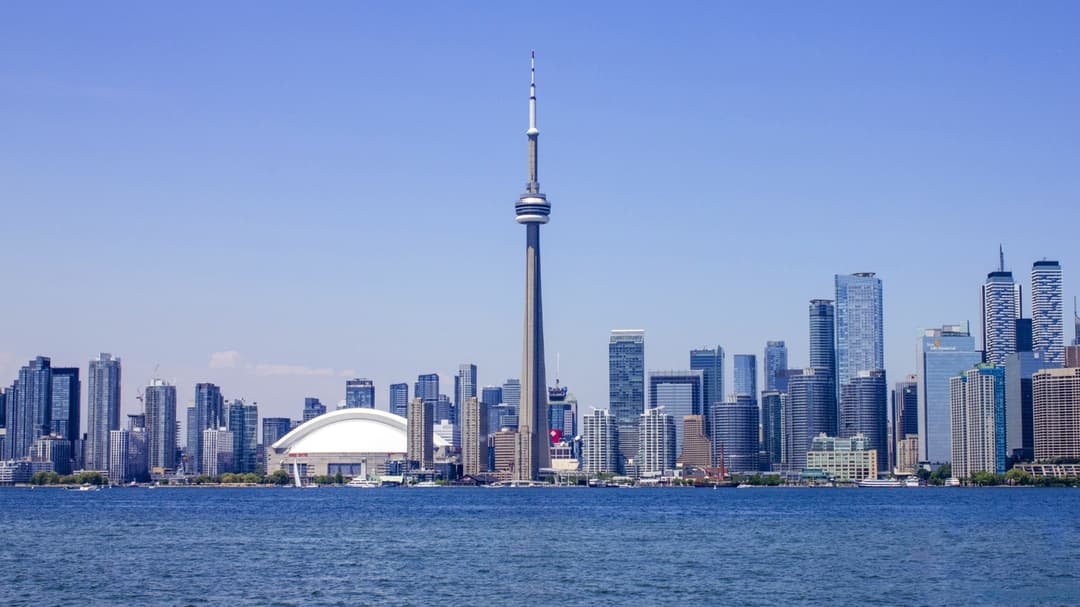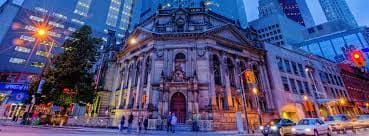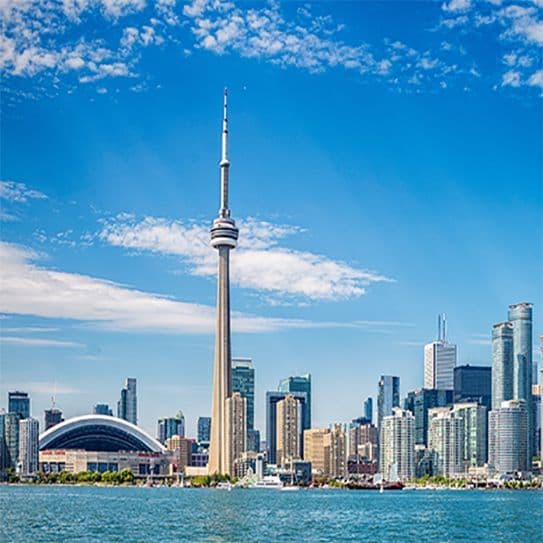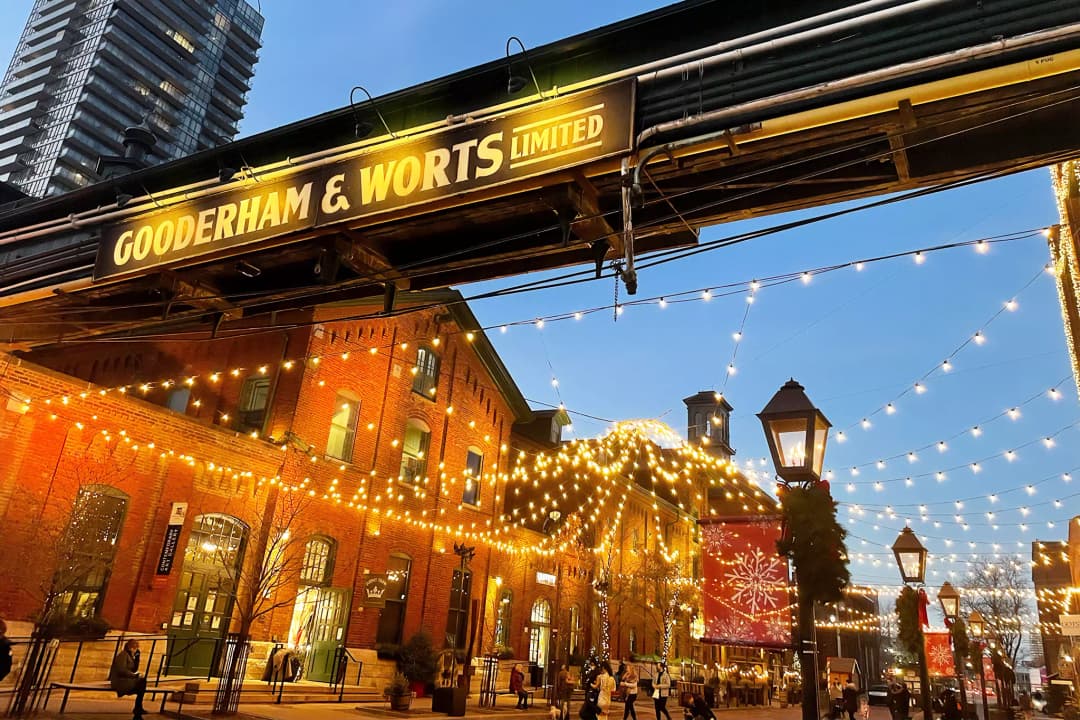
Visiting or New to Toronto? Fun Stuff to Do!
Art Gallery of Ontario
Established in 1900, the Art Gallery of Ontario has more than 90,000 items in its encyclopedic collection, which spans the last 2,000 years. Of particular note are its collections of Canadian and Indigenous art, though it also has notable works by European masters like Rembrandt, Auguste Rodin, and Pablo Picasso. The museum underwent a $276 million renovation by Toronto-born architect Frank Gehry in 2008, his first work in his native city, doubling its exhibition space.

Harbourfront Centre
In 1972, the Canadian government began a massive revitalization project in Toronto to boost both local, national, and international tourism, transforming 100 acres of industrial waterfront into cultural, educational, and recreational attractions. Overseeing the operation was the Harbourfront Corporation, which became the Harbourfront Centre nonprofit in 1991. The organization was tasked with organizing cultural programming in the neighborhood—more specifically, in a 10-acre area right on the water—which is still its primary function today. And it’s quite successful: In non-pandemic years, Harbourfront Centre’s myriad venues and public spaces would host some 4,000 events each year, from summer writing festivals to the performing arts to art and architecture exhibitions, drawing in more than 17 million visitors. In the winter, there's even an ice skating rink.
Scarborough Bluffs
On the east side of Toronto along Lake Ontario is a nine-mile stretch of cliffs known as the Scarborough Bluffs, home to a series of 11 different parks. The area’s natural beauty is the main draw, with scenic views from the top of the bluffs over the lake. Hiking is the number one activity; you can choose to hike the 300-foot cliffs or simply drive up. There’s also a sandy beach with picnic areas at Bluffer’s Park.

Casa Loma
Canada might not be known for its castles, but Toronto is home to an unusual one that has become a beloved tourist attraction. Casa Loma is a 98-room château built by Canadian businessman Sir Henry Mill Pellatt in 1914, who went bankrupt shortly after completing his beloved home. Casa Loma now serves as a museum and a popular filming location, most notably serving as Professor Xavier’s School for Gifted Youngers in X-Men. Do the self-guided tour, which you can fly through at a clip, providing the place isn't packed; it can be tricky to rush past the crowds during busier times, especially in some of the smaller spaces, tunnels, and towers. Must-sees include secret passageways, gardens, and an underground pool.

St. Lawrence Market
St. Lawrence Market is perhaps the most famous market in Toronto, and locals regularly shop its stalls for produce, meats, cheeses, and more. While the focus of your trip should be browsing the dozens of food stalls, it’s interesting to take a look at its architecture, too. Though the current main building was erected in 1902, part of the Old City Hall, which dates to 1845, was incorporated into it. There’s also The Market Kitchen, a cooking school and event space where you can take culinary classes or partake in special hands-on dinners that include shopping the market for ingredients.

Need a Roommate in Toronto? Click here
Hockey Hall of Fame
If there’s anything Canadians are known for, it’s hockey. The sport is the most popular in the country, so it’s no surprise that its most populous city is home to the Hockey Hall of Fame. Established in 1943, the non-profit organization has been inducting legendary players and other hockey professionals to its ranks every year since 1945. Today, the Hall of Fame also functions as a museum and houses the Stanley Cup. The museum is a must-take pilgrimage for all hockey lovers, though its gift shop deserves a stop, too: Pick up a wide array of themed merch, from authentic NHL and Hall of Fame apparel to souvenirs, novelty items, and all manner of presents for the hockey fans in your life.

Kensington Market
Kensington Market is not actually a market, but a food-centric neighborhood in downtown Toronto. While the city at large is known for its diverse population, there’s perhaps no better place to witness that multiculturalism in such a concentrated area than here. Whatever type of food you’re in the mood for, from Ethiopian to Vietnamese to Jamaican, there’s probably a restaurant, grocery store, or hole-in-the-wall for it. Some favorites for stellar tacos and NU Bügel for Montreal-style bagels with Venezuelan toppings. Beyond all the food, there are also vintage shops, independent boutiques, and artists’ studios tucked into Victorian-style houses all throughout the neighborhood.
High Park
Toronto’s largest public park has 400 acres that range from manicured lawns to themed gardens to untouched nature. In addition to the greenery, there are a number of interactive activities, including a zoo, an outdoor swimming pool, tennis courts, ice skating rinks (or frozen ponds in winter), a dog run, and playgrounds. It’s a park designed for all Torontonians and visitors to use however they best see fit, whether for leisure, sport, or fitness.

Allan Gardens Conservatory
History, architecture, and plant life collide at Allan Gardens Conservatory, a park with a series of connected Victorian-era greenhouses in the center of Toronto with 16,000 square feet of space to hold its botanical collection. Though the Toronto Horticultural Society inaugurated a garden on the site in 1858, the central Palm House, designed by architect Robert McCallum, opened in 1910. Subsequent additions have expanded the gardens’ holdings to include a tropical house, an orchid house, a temperate house, an arid house, and a children’s conservatory. Because the gardens are enclosed and protected from the cold, they’re open 365 days a year. There’s also an (outdoor) arboretum with 55 species of trees, providing lovely green space for Torontonians. Catch the three seasonal floral shows for a multicolored spectacle: the Spring Hydrangea Show, the Fall Chrysanthemum Show, and the Winter Flower Show.
Aga Khan Museum
Set in a 17-acre park, the elegant Aga Khan Museum, designed by architect Fumihiko Maki and opened in 2014, is the first museum in North America dedicated to Islamic art. The Aga Khan Museum is named after the spiritual leader of Shia Ismaili Muslims, who funded the project with the mission to share the artistic and scientific contributions of global Muslim communities with the world. While the museum has a 1,000-piece permanent collection, it also hosts rotating exhibitions and special events; one notable recent exhibit addressed the role of female citizens of Saudi Arabia (and featured an installation made from women’s travel documents), while another—inspired by the 2003 destruction of the library at the University of Baghdad’s College of Fine Arts—featured an ever-evolving installation of books that were later donated to the college.
Bata Shoe Museum
When architect-turned-businesswoman Sonja Bata traveled the world with her husband in the 1940s, she didn’t collect postcards or trinkets: she collected shoes. Three decades later, the couple established the Bata Shoe Museum Foundation to create a permanent home for her collection and to promote its growth. The current museum, which opened in 1995, houses more than 13,000 shoes and related objects, so there's plenty to see; but don't miss showstoppers like Marilyn Monroe’s red leather stilettos, John Lennon’s Chelsea boots, Queen Victoria’s silk slippers, Madonna’s platform Dolce & Gabbanas, Elton John’s silver and red high platform boots, and—delightfully—the Dalai Lama’s flip flops.
CN Tower
Toronto’s most iconic landmark is the 1,815-foot CN Tower, the tallest freestanding structure in the world from 1976, when it was built, to 2007. While the tower does serve a purpose—its 335-foot antenna is used to broadcast television, radio, and cell signals—it’s also the most popular attraction in the city. The concrete megastructure is home to a number of observation decks, a restaurant with the highest wine cellar in the world (at 1,151 feet), and the EdgeWalk, a thrilling attraction that lets visitors walk outside the structure at 1,168 feet above street level. Tickets are required, with different packages providing different experiences.

Museum of Contemporary Art Toronto Canada
In 2018, MOCA Toronto moved from Queen West to a new home in a heritage-listed former factory building in Junction Triangle, an up-and-coming neighborhood. The space is industrial and gritty. Considering the museum is off the beaten path, visitors seek it out intentionally, whether they’re art-world insiders or simply curious about Toronto's art scene. The museum isn’t a collecting museum; instead, it puts on temporary exhibitions representing all mediums, primarily featuring Canadian artists and occasionally international ones. There are thematic group shows as well as spotlights on individual artists.
TIFF Bell Lightbox
TIFF Bell Lightbox is not only the headquarters of the annual Toronto International Film Festival, but it’s also the city’s premier movie theater and entertainment complex, open to the public., the modern facilities include five state-of-the-art cinemas, a restaurant, classrooms, a film reference library, gallery space, and a members’ lounge. Outside of the 10-day festival in September, TIFF Bell Lightbox screens new releases and runs thematic film programming year-round, focusing on anything from classic blockbusters to foreign indie films.
Toronto Islands
The Toronto Islands, located just offshore from downtown Toronto, are an 820-acre car-free haven. While 600 people live on the islands, the majority of visitors are day-trippers who come to enjoy the beaches, parks, gardens, yacht clubs, cafés, and a small amusement park for children. Seasonal activities include kayaking, picnicking, barbecuing, and outdoor yoga classes.
Royal Ontario Museum
If you’re looking for a one-stop shop of a museum, the Royal Ontario Museum (ROM) is your best bet. Originally established in 1912 as collection of five museums dedicated to archaeology, paleontology, mineralogy, zoology, and geology, ROM has since consolidated its efforts, covering everything from natural and cultural history to fine arts and design within the same massive space. It’s not often you can find dinosaur bones and fashion exhibitions within the same space. Be sure to spend a few minutes lingering outside the Queen's Park entrance, too, to best appreciate starchitect Daniel Libeskind's geometric marvel of a structure, dubbed the "Michael Lee-Chin Crystal," part of a multi-million dollar expansion to the museum.
Distillery District
A collection of 47 19th-century buildings that once comprised the Gooderham & Worts Distillery is now a major dining, shopping, and cultural hub in Toronto aptly called the Distillery District. Strolling through the neighborhood’s brick-paved pedestrian streets, visitors might feel as if they’ve been transported to Victorian-era Canada—the craftspeople who restored the old structures kept true to the original construction materials as much as possible. And while there are still breweries and distilleries here , there are also restaurants, local-owned boutiques, and art galleries.

